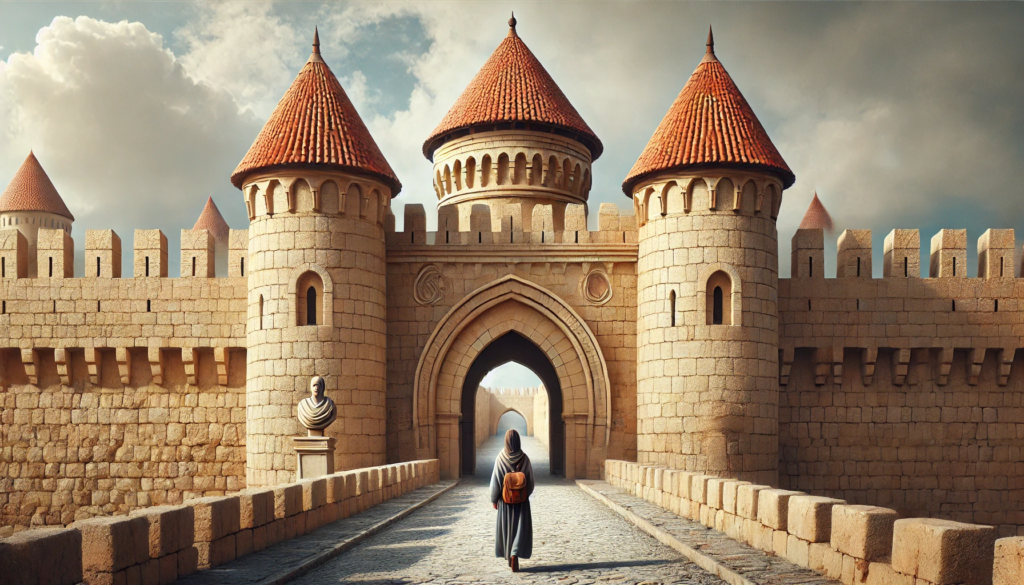ChatGPT:
Carcassonne is a captivating, fortified city in the Occitanie region of southern France, famed for its medieval citadel, extensive double-walled ramparts, and distinctive watchtowers. Tracing its roots back to ancient times, Carcassonne has been shaped over centuries by Romans, Visigoths, Moors, and medieval Frankish rulers. Today, it stands as one of Europe’s most remarkable examples of a fortified medieval city and a UNESCO World Heritage Site. Below is an overview of its origin, history, and development.
Early Origins and Roman Era
1. Pre-Roman Settlement
• The earliest known settlement around Carcassonne dates back to the 6th century BCE. Celtic tribes occupied the hill, recognized for its strategic vantage point along trade routes between the Atlantic and the Mediterranean.
2. Roman Foundation
• By the 1st century BCE, the Romans recognized the military importance of the hilltop, incorporating the site into the frontier of the Roman province of Gaul.
• They constructed the first fortifications—thick walls and defensive structures—to protect against incursions from hostile tribes north of the region. Some of these Roman walls and foundations remain visible in Carcassonne’s lower ramparts.
Visigothic and Early Medieval Period
1. Visigothic Rule
• After the collapse of the Western Roman Empire in the 5th century CE, Carcassonne was absorbed into the expanding Visigothic kingdom.
• The Visigoths enhanced the existing Roman fortifications, transforming Carcassonne into a key frontier stronghold.
2. Frankish and Moorish Influence
• In the early 8th century, the Moors (or Saracens) briefly captured the fortress and left their imprint on the architecture and local culture.
• By the mid-8th century, the Franks under Pepin the Short and later Charlemagne laid siege to Carcassonne. Though medieval legends (including the tale of Lady Carcas, for whom the city is said to be named) color these events, historically the Franks eventually established control over the citadel and surrounding lands.
The Medieval Golden Age and the Cathar Period
1. Counts of Carcassonne and the Trencavel Dynasty
• From the 11th to the 13th century, power in Carcassonne was closely tied to local noble families, most notably the Trencavels, who ruled as viscounts and oversaw a flourishing medieval community.
2. Cathar Stronghold
• In the early 13th century, Carcassonne became a focal point of the Cathar (Albigensian) heresy—a Christian sect that the Catholic Church deemed heretical.
• With the Albigensian Crusade (1209–1229), launched by Pope Innocent III, northern French barons led by Simon de Montfort targeted the Cathar strongholds, including Carcassonne. The city fell in 1209, and the Trencavel dynasty was overthrown.
3. Royal Fortress
• After the conclusion of the Albigensian Crusade, the French crown took direct control of Carcassonne, turning it into a bastion on the frontier with the Kingdom of Aragon (present-day Spain).
• The medieval walls were expanded, and the castle (Château Comtal) was converted into a royal stronghold.
Decline and 19th-Century Restoration
1. Shifts in Military Importance
• As the French border shifted farther south in the later Middle Ages, Carcassonne’s role as a frontier fortress diminished.
• The city gradually lost strategic prominence, and its fortifications fell into disrepair by the 17th and 18th centuries.
2. Threat of Demolition
• By the early 19th century, the medieval ramparts were so dilapidated that French authorities considered dismantling them altogether.
• Thanks to local outcry and the efforts of historian Jean-Pierre Cros-Mayrevieille, the city’s importance as a heritage site was recognized.
3. Viollet-le-Duc’s Restoration
• In the mid-19th century, architect Eugène Viollet-le-Duc undertook a major restoration project at Carcassonne.
• His work, though sometimes controversial for blending creative interpretation with historical authenticity, saved the citadel from ruin and reestablished its iconic skyline of conical roofs and crenellated towers.
Modern Era and UNESCO World Heritage Status
1. Tourist Destination
• Today, Carcassonne’s citadel (known simply as “La Cité”) is among the most visited sites in France, drawing tourists to its medieval streets, preserved ramparts, and the impressive Château Comtal.
• Its unique double-walled fortifications and roughly 50 watchtowers offer an immersive experience of medieval architecture.
2. Recognition by UNESCO
• In 1997, the historic fortified city of Carcassonne was designated a UNESCO World Heritage Site, affirming its outstanding universal value.
• This designation has helped maintain ongoing conservation and cultural initiatives, ensuring the citadel’s preservation for future generations.
3. Cultural Life
• Beyond its medieval heritage, modern Carcassonne hosts festivals, concerts, and cultural events, notably the Carcassonne Festival in summer, which features music, theater, and fireworks displayed over the medieval ramparts.
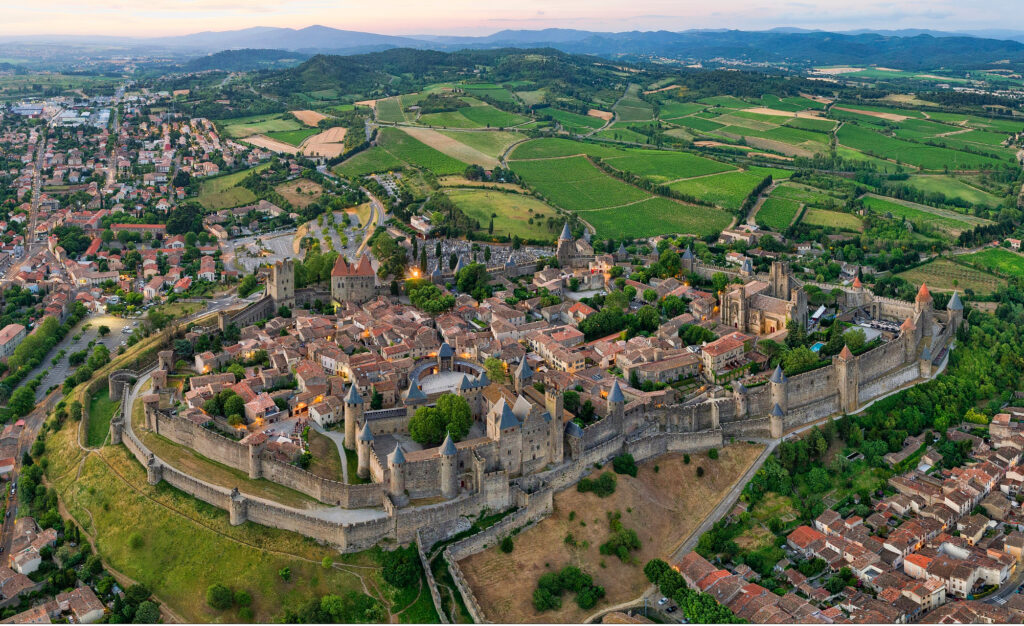
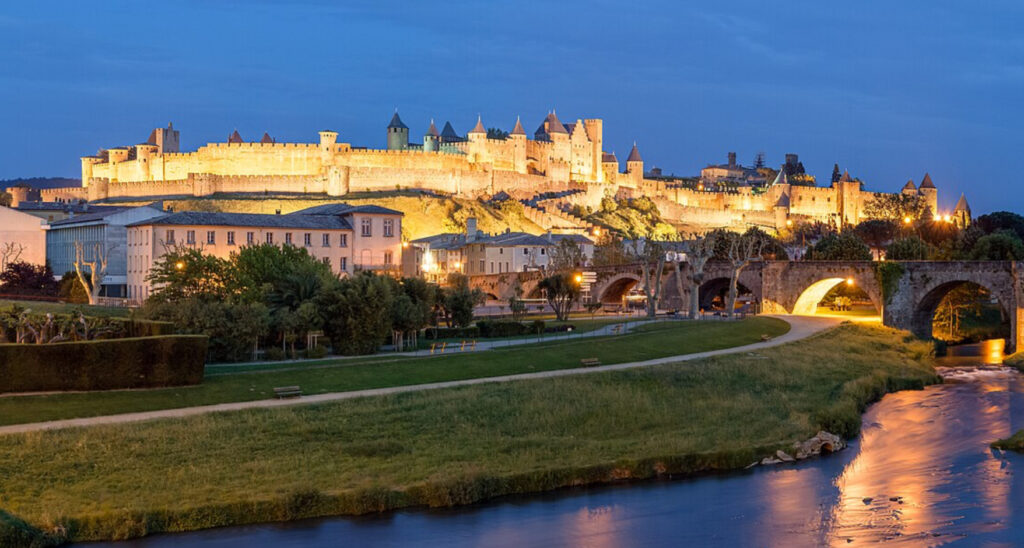
Carcassonne’s fortifications are among the best-preserved and most impressive examples of medieval military architecture in Europe. They evolved over many centuries—from Roman foundations to major 19th-century restorations—resulting in a layered and visually striking complex of walls, towers, gates, and a central castle. Below are some key features and highlights:
1. Double-Walled Ramparts
• Inner Ramparts (Gallo-Roman Foundations):
• The earliest fortifications date back to the late Roman Empire, when Carcassonne was a frontier stronghold in Gaul.
• Some of these original Roman walls can still be seen in the inner circuit of fortifications. Characteristic features include the use of brick and stone in alternating layers, a common Roman building technique.
• Later medieval rulers (Visigoths, local viscounts) adapted and strengthened these walls.
• Outer Ramparts (Medieval Extensions):
• During the 13th and 14th centuries—especially following the Albigensian Crusade—French royal architects built a second line of walls around the city.
• This outer belt of fortifications expanded Carcassonne’s defensive perimeter, creating the famous “double-walled” system that encircles La Cité.
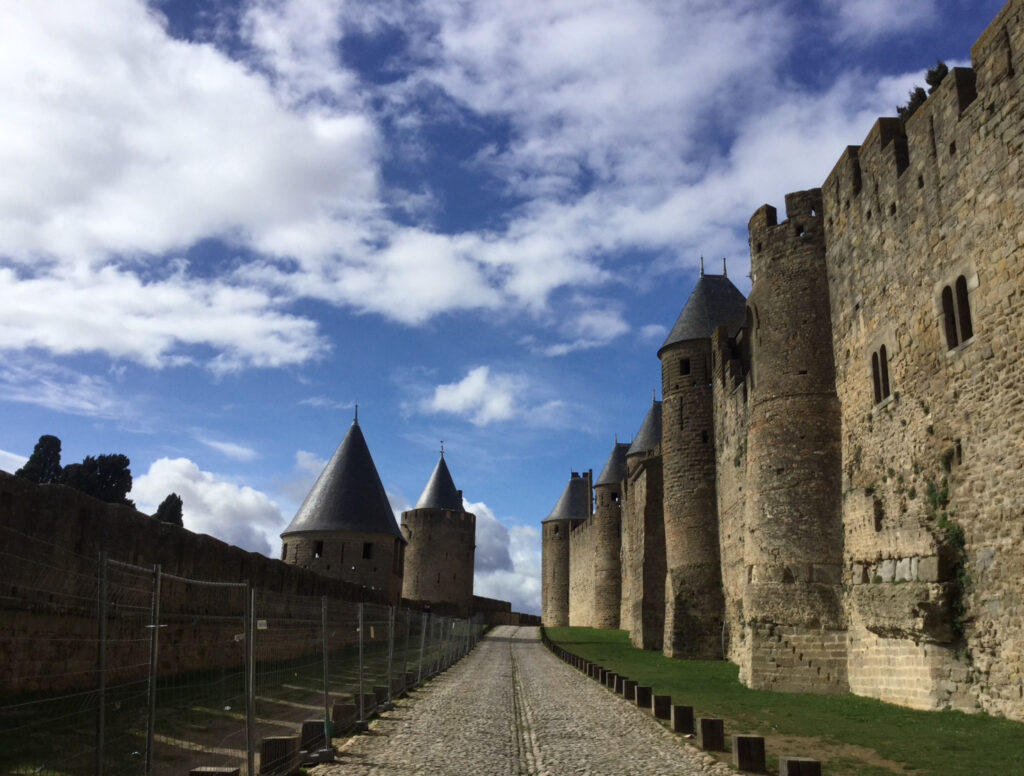
2. Towers and Gateways
• Towers:
• In total, Carcassonne’s ramparts boast nearly 50 towers, each designed to defend a specific stretch of the wall or a strategic approach to the city.
• Many towers have conical roofs and crenellations (the “teeth” along the tops of walls), which give Carcassonne its iconic silhouette.
• Towers incorporate arrow slits, machicolations (floor openings through which defenders could drop stones or boiling liquids), and other defensive elements.
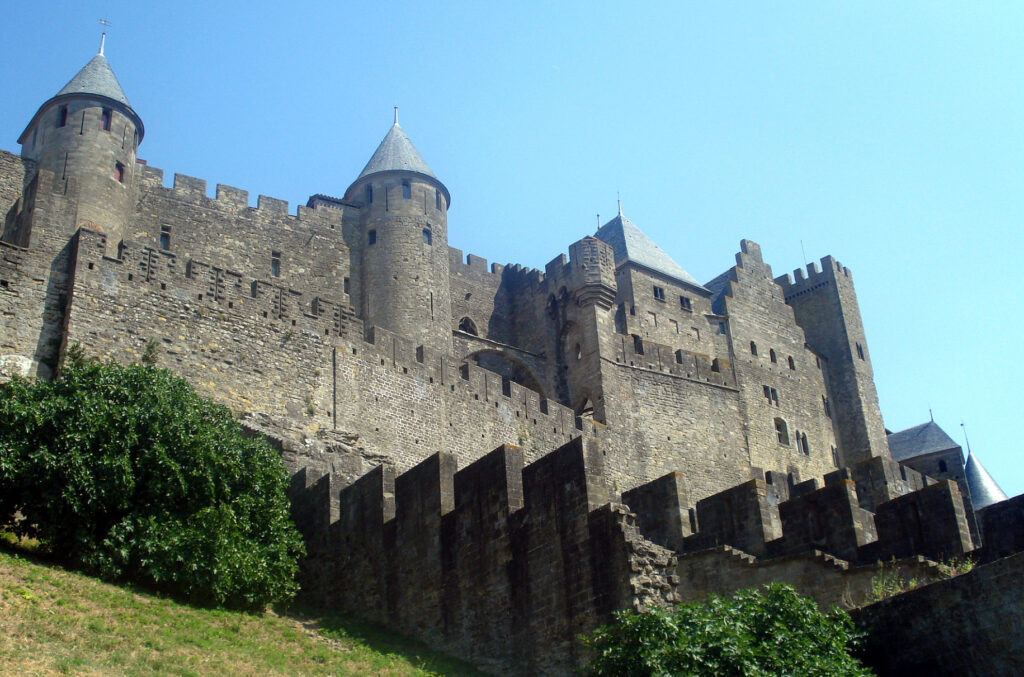
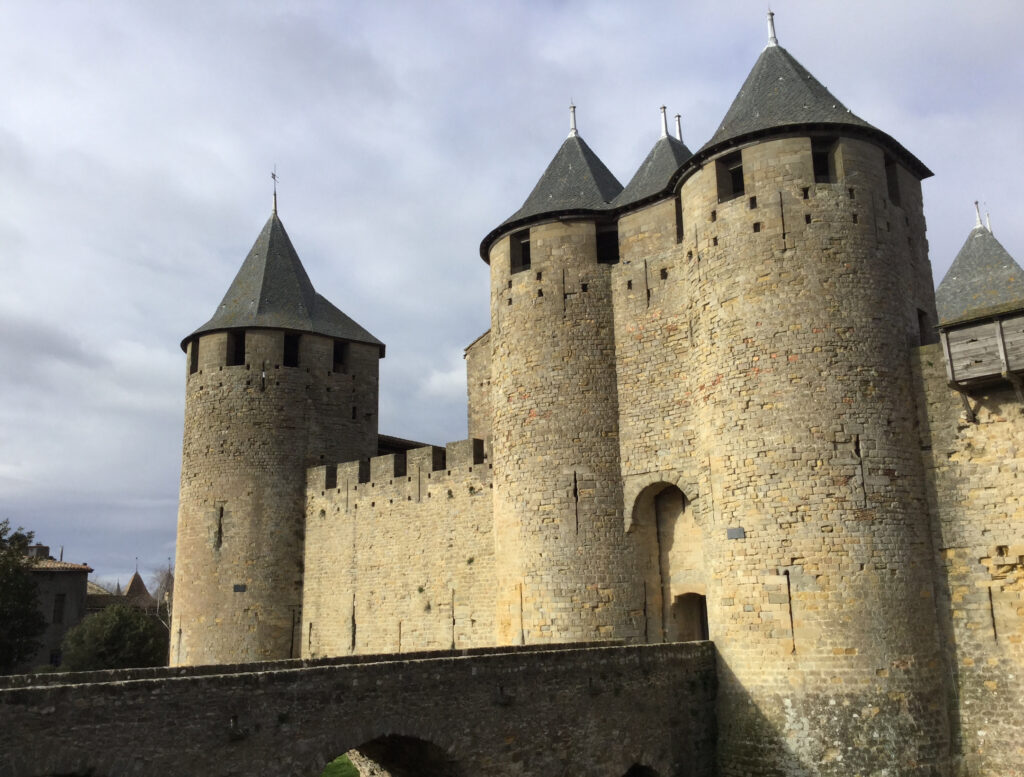
• Main Gates:
• Narbonnaise Gate (Porte Narbonnaise): Often the primary entrance for modern visitors, this imposing double gate is flanked by two large towers. It served as a ceremonial as well as defensive gateway and underscores the city’s former strategic importance on trade routes.
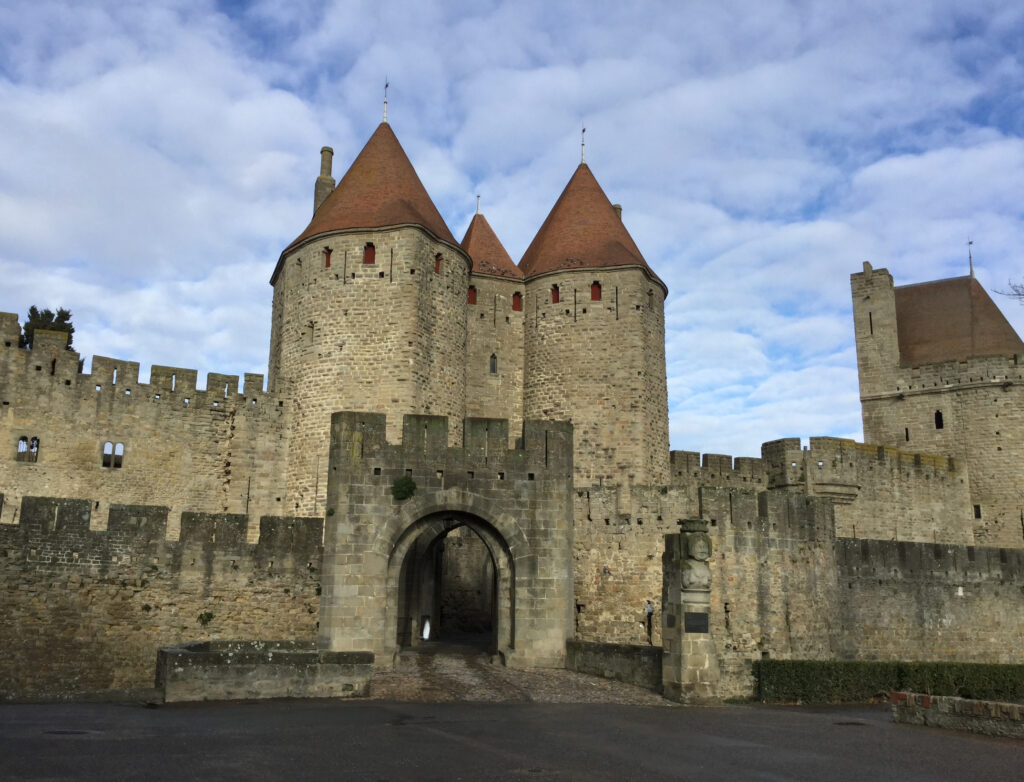
• Aude Gate (Porte de l’Aude): Located on the western side, this gate overlooks the Aude River and leads down toward the lower town. The approach is steeper and historically more difficult for invaders.
3. Château Comtal (The Count’s Castle)
• Heart of La Cité:
• The Château Comtal sits within the inner wall, forming a fortress within a fortress. It was the residence of the Trencavel family (the viscounts of Carcassonne) before passing into royal hands in the 13th century.
• Designed to protect the ruling family in case the outer defenses were breached, the castle has its own moat (now dry), drawbridge, and barbican.
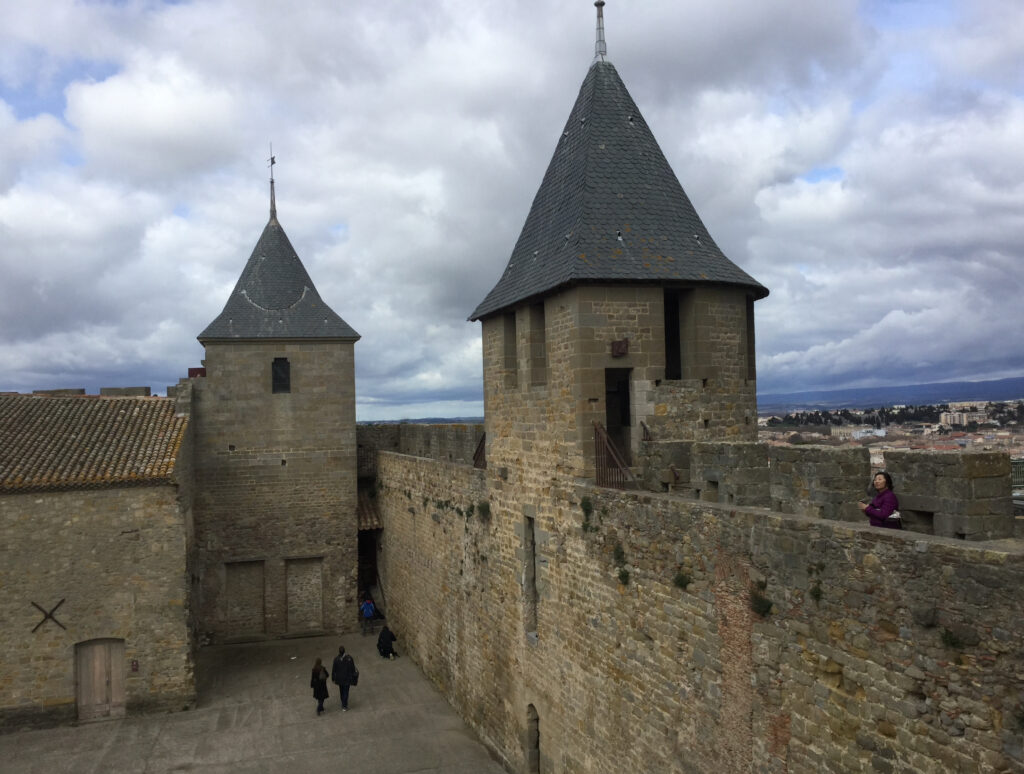
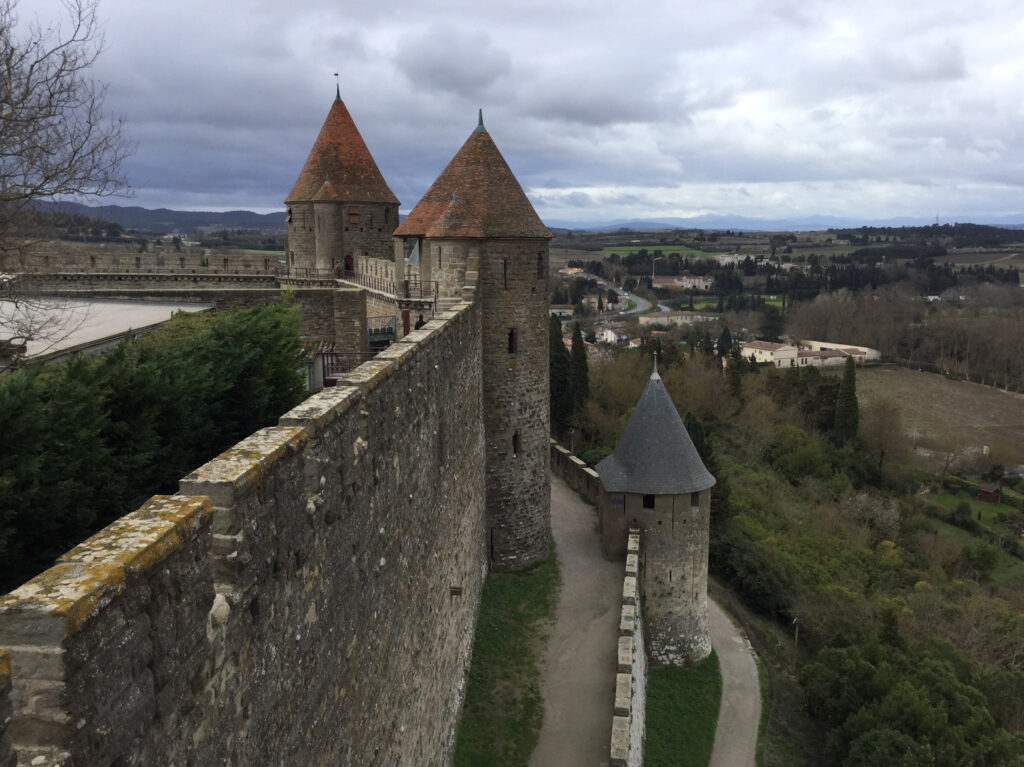
• Architectural Layers:
• Part of the castle’s design reveals Romanesque and Gothic influences, reflecting expansions over time.
• Today, it houses a museum with exhibits on the city’s history and restoration, and visitors can explore sections of the castle ramparts that offer sweeping views of the citadel and surrounding countryside.
4. Distinguishing Architectural Details
• Roman Masonry vs. Medieval Masonry:
• In some places, you can clearly see Roman layers of stone and brick alternating in neat, horizontal bands—indicative of late Roman building methods.
• Crenellations and Arrow Slits:
• These features provided defensibility, allowing archers and crossbowmen to fire while remaining protected behind merlons (the upright sections of the battlements).
• Machicolations and Hoardings:
• Overhanging parapet structures enabled defenders to drop or pour defensive materials directly down on attackers at the base of the walls.
• Conical Roofs:
• Many of the towers have steep conical roofs, often covered with slate or stone tiles. These became a characteristic feature of Eugène Viollet-le-Duc’s 19th-century restorations and contribute to Carcassonne’s fairy-tale appearance.
5. 19th-Century Restoration by Eugène Viollet-le-Duc
• Preservation Efforts:
• By the early 19th century, Carcassonne’s medieval defenses were in disrepair and faced demolition. Viollet-le-Duc, commissioned by the French government, undertook a major restoration.
• He based much of his work on historical research but also employed some creative liberties—most notably, the steep conical roofs on the towers, which some historians argue may not have been the original design for all towers in southern France.
• Controversial But Transformative:
• Critics have sometimes labeled his approach “idealized” medievalism. Nonetheless, without his intervention, Carcassonne’s remarkable ramparts might have been lost entirely.
• His restoration cemented Carcassonne’s global reputation as a quintessential medieval fortress city.
6. Experiencing the Fortifications Today
• Rampart Walks:
• Several sections of the walls are open to visitors, allowing them to stroll along the battlements and take in panoramic views.
• Immersive Medieval Atmosphere:
• Within the citadel, narrow cobblestone lanes, half-timbered houses, and carefully preserved buildings keep the medieval ambiance alive.
Conclusion
Carcassonne’s fortifications and architectural features tell a story of continuous adaptation—Roman foundation walls, Visigothic and Frankish enhancements, medieval expansions, and 19th-century restorations. This layered history creates a uniquely immersive experience for visitors exploring the fortress city. Whether walking atop the battlements, admiring the conical-roofed towers, or entering through centuries-old gates, one gains a profound appreciation for the artistry and engineering behind these formidable defenses.
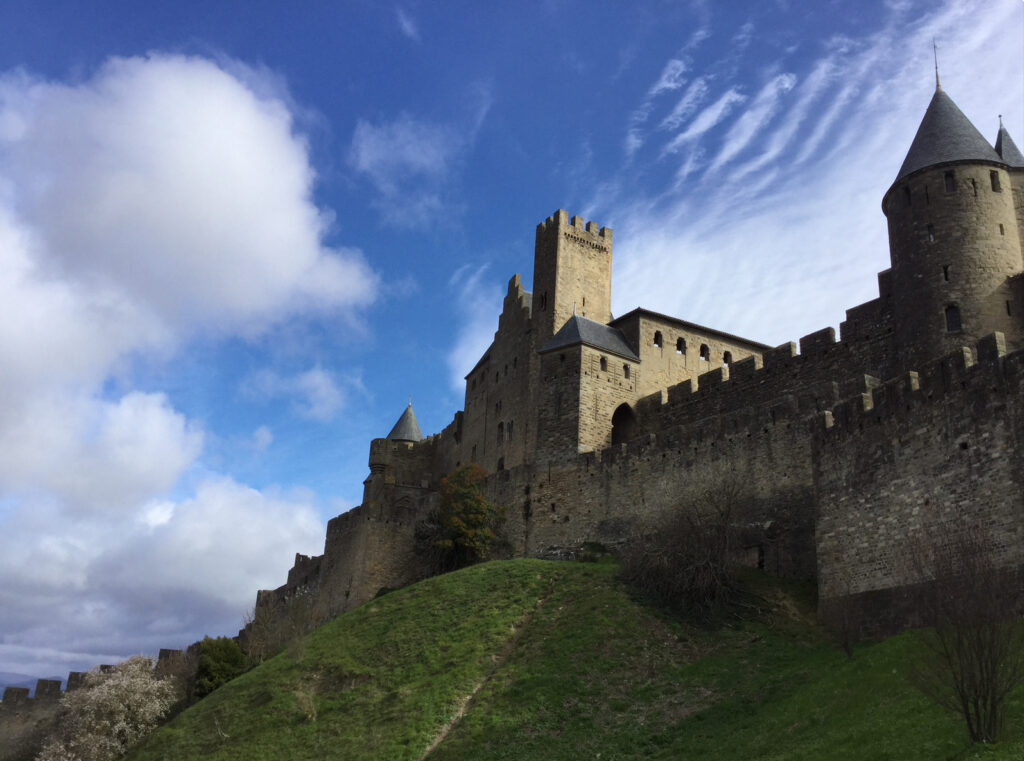
Below is a selection of historical monuments and tourist attractions in and around Carcassonne, highlighting the city’s medieval heritage, religious architecture, and cultural offerings:
1. La Cité (Medieval Citadel)
• The iconic fortified upper town, encircled by double-walled ramparts with nearly 50 towers.
• Designated a UNESCO World Heritage Site in 1997.
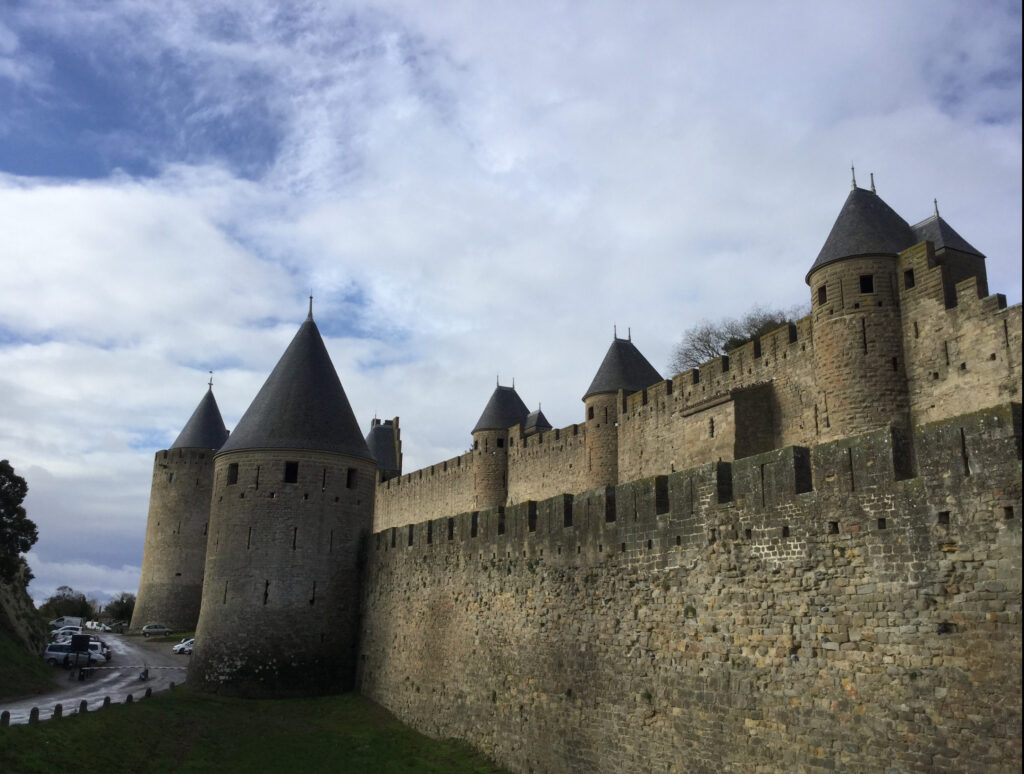
2. Château Comtal (Count’s Castle)
• A fortress-within-a-fortress located in the heart of La Cité.
• Historically the seat of the Trencavel family (viscounts of Carcassonne).
3. Basilica of Saints Nazarius and Celsus (Basilique Saint-Nazaire)
• A former cathedral within La Cité, blending Romanesque and Gothic styles.
• Noted for its impressive stained-glass windows, including some of the oldest in southern France.
• A significant religious monument once called the “Jewel of the Citadel.”
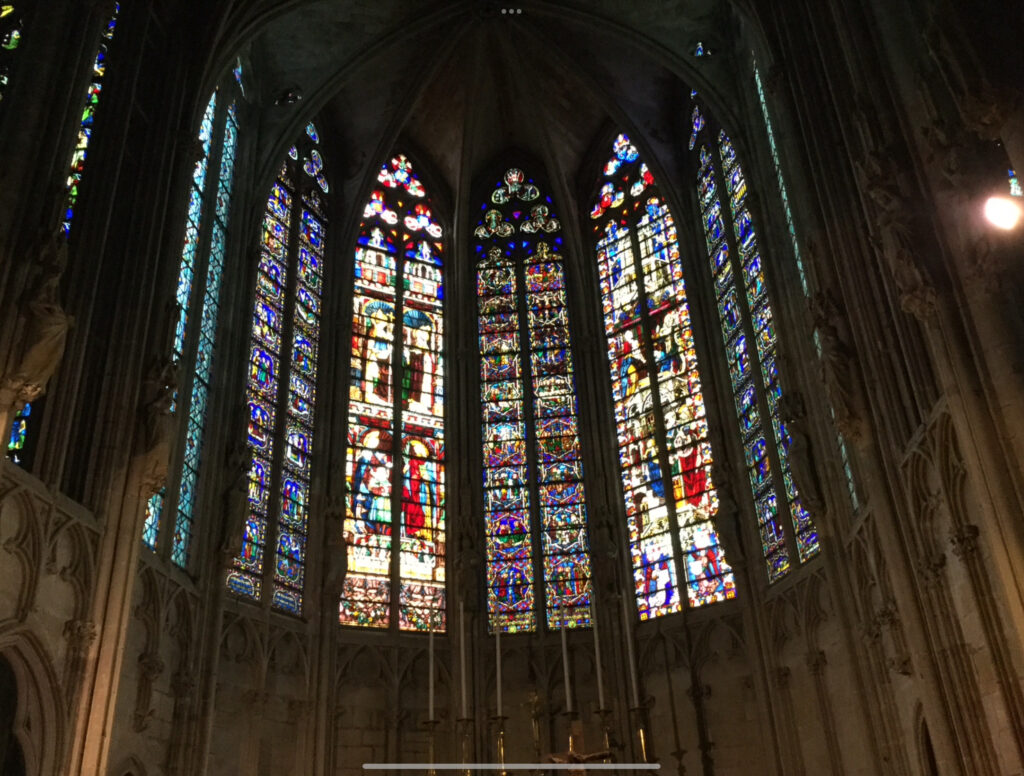
4. The Narbonnaise Gate (Porte Narbonnaise)
• The principal entrance to the medieval citadel.
• Features twin towers and a barbican, emblematic of Carcassonne’s formidable defenses.
5. The Aude Gate (Porte de l’Aude)
• The western gate leading down toward the Aude River.
• Offers a steep, scenic approach to La Cité and picturesque views of the ramparts from below.
6. Rampart Walks
• Several sections of the inner and outer ramparts are accessible for visitors.
• Provide panoramic views of the citadel, lower town, and the surrounding landscape.
7. Museum of the Inquisition (Musée de l’Inquisition)
• Showcases historical artifacts and exhibits related to the Albigensian Crusade and subsequent inquisitions in the region.
8. School Museum (Le Musée de l’École)
• A small museum in La Cité exploring the history of French primary education from the 19th to mid-20th century.
• Features vintage desks, books, and classroom materials that illustrate changes in teaching methods.
9. Bastide Saint-Louis (Lower Town)
• The “newer” section of Carcassonne, founded in the 13th century.
• Place Carnot is the main square, with a bustling market and numerous cafés.
• Highlights include St. Michael’s Cathedral (Cathédrale Saint-Michel) and Église Saint-Vincent, both showcasing Gothic and Southern French style elements.
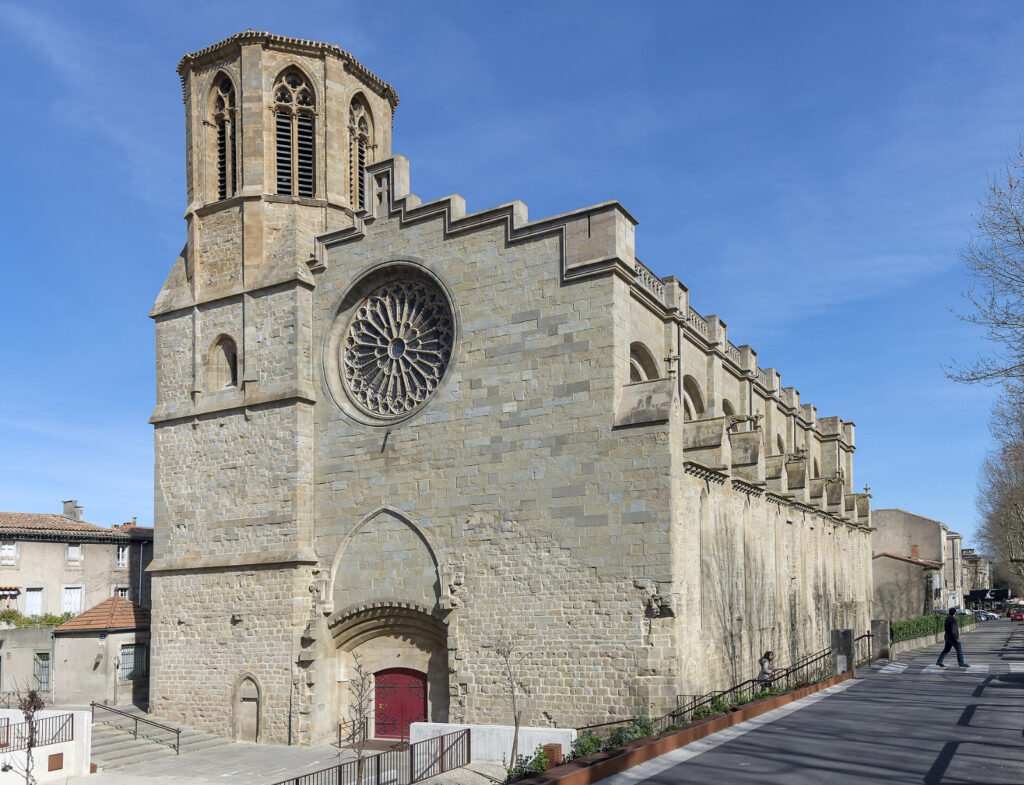
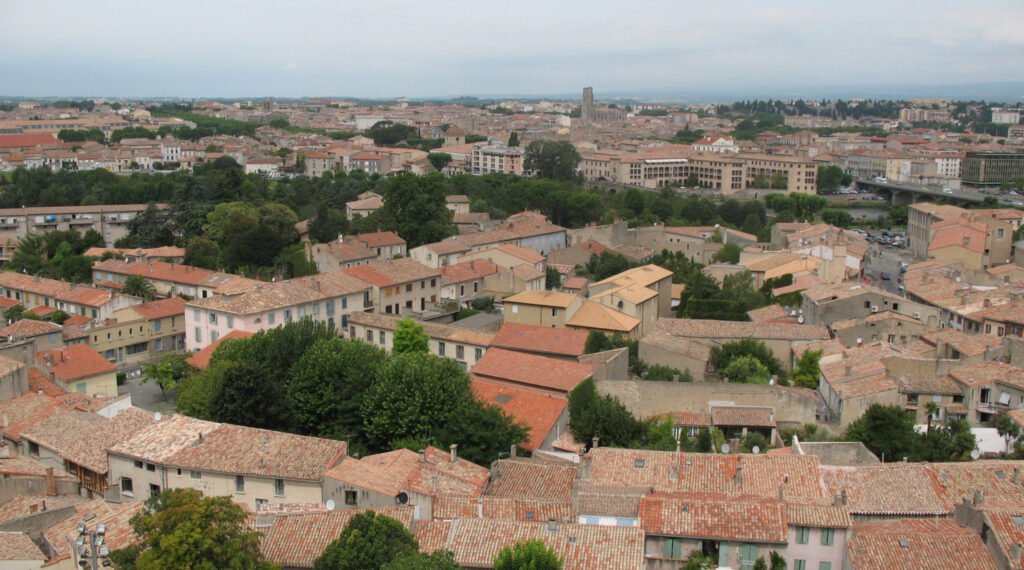
10. Pont Vieux (Old Bridge)
• A pedestrian bridge spanning the Aude River, linking La Cité with the Bastide Saint-Louis.
11. Canal du Midi
• Although not inside the medieval walls, the Canal du Midi (a UNESCO World Heritage Site) passes near Carcassonne.
• Offers boat tours and walking/biking paths lined with plane trees.
• Designed in the 17th century to link the Atlantic and the Mediterranean.
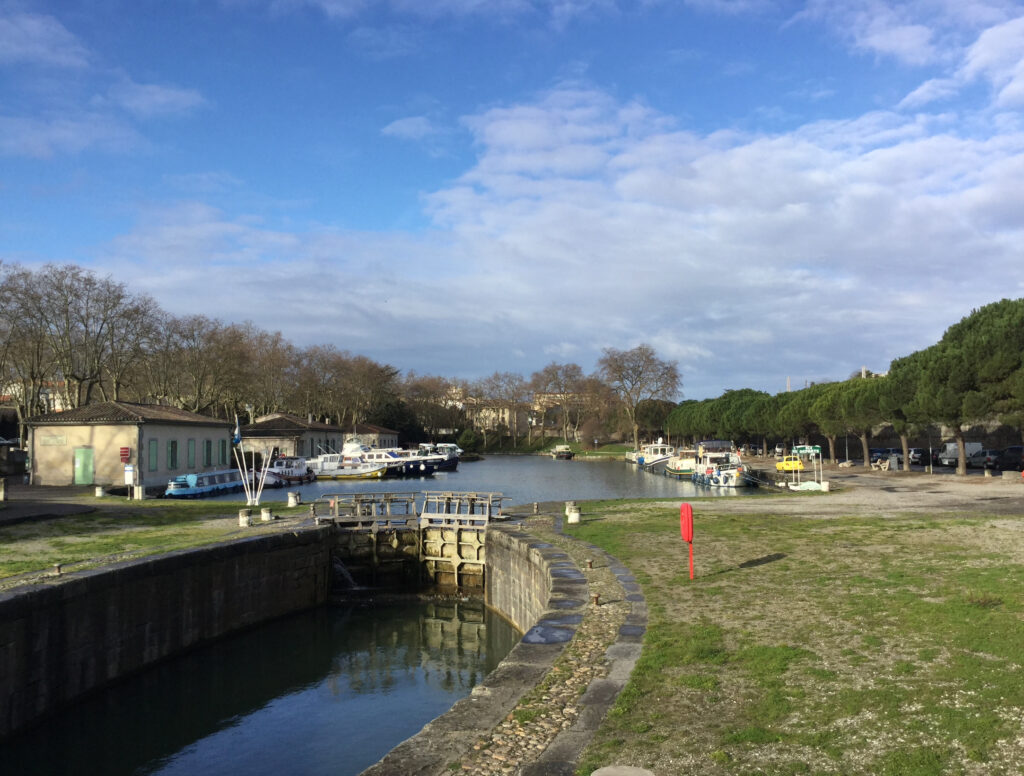
12. Carcassonne Festival
• An annual cultural festival held in summer, featuring music, theater, and dance performances.
• Culminates in a spectacular fireworks display over La Cité on Bastille Day (July 14), drawing large crowds.
From the formidable Château Comtal and towering basilica to the scenic Pont Vieux and bustling lower town, these monuments and attractions spotlight the unique heritage that makes Carcassonne one of France’s most popular historical destinations.
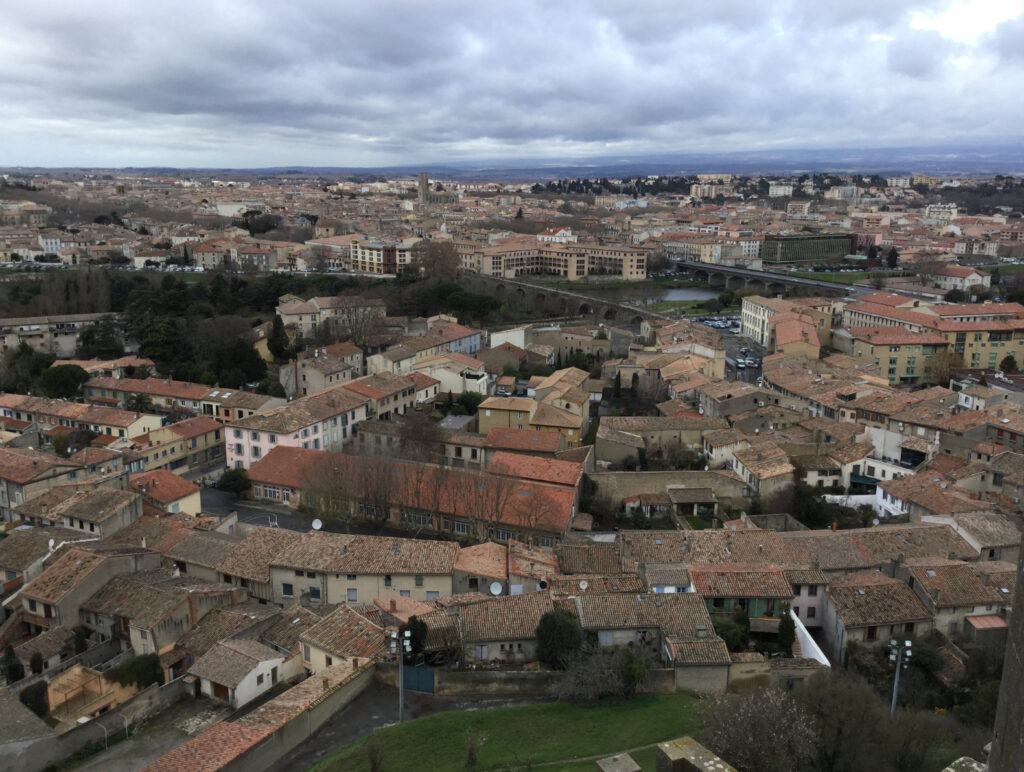
Carcassonne can be thoroughly enjoyed in a single day if you plan your itinerary to capture its medieval charm, key historical sites, and delicious local cuisine. Below is a step-by-step guide to help you get the most out of your visit.
Morning
1. Breakfast in La Cité
• Start your day early by entering La Cité (the medieval citadel) through the Narbonnaise Gate.
• Look for a small café or bakery near the entrance for a classic French breakfast of a croissant or pain au chocolat, accompanied by an espresso or café crème.
• Enjoy the ambiance of the narrow, cobblestone streets before the crowds arrive.
2. Château Comtal (Count’s Castle)
• Head straight to the Château Comtal, located within the citadel’s inner walls.
• Allocate about 1–1.5 hours to explore its interior museum, rampart walks, and informative displays on the castle’s evolution.
• Take a stroll along sections of the fortified walls to enjoy panoramic views of the surrounding countryside and the lower town (Ville Basse).
3. Exploring the Inner Ramparts
• After the castle, wander along the inner ramparts and admire the Roman and medieval masonry still visible in some sections.
• Look out for differences between Roman brick-and-stone layers and the later medieval fortifications.
Midday
1. Lunch: Cassoulet and Local Wine
• No trip to Carcassonne is complete without tasting the local specialty, cassoulet—a hearty stew of white beans, duck confit, and pork sausages.
• Many restaurants within La Cité or in the lower town offer excellent cassoulet, often served with a side of rustic bread.
• Pair it with a glass of Minervois or Corbières wine, both produced in the surrounding Languedoc region.
2. Stroll Through the Medieval Streets
• After lunch, take time to meander through the winding alleys, stopping at local artisan shops for souvenirs or handcrafted goods.
• If you have a sweet tooth, pick up some nougat or calissons (a Provençal confection) from one of the specialty stores.
Afternoon
1. Aude Gate and River Views
• Exit the citadel through the Aude Gate (Porte de l’Aude) on the western side.
• Descend the path toward the Aude River, pausing to enjoy the picturesque view of the fortress from below.
• This vantage point offers excellent photo opportunities of Carcassonne’s iconic double-walled ramparts.
2. Walk Over to the Bastide Saint-Louis (Ville Basse)
• Cross the Pont Vieux (Old Bridge) or another nearby pedestrian bridge to reach the lower town, known as the Bastide Saint-Louis.
• The bastide, founded in the 13th century, showcases a rectangular grid layout with broad, tree-lined streets—quite a contrast to the labyrinthine citadel.
3. Visit the Main Square and St. Michael’s Cathedral
• Explore the Place Carnot, a lively square where locals gather, often with a small market or café terraces.
• Stop by St. Michael’s Cathedral (Cathédrale Saint-Michel) or Église Saint-Vincent to appreciate Gothic and Southern French architectural elements.
Late Afternoon / Early Evening
1. Afternoon Break: Local Treats
• Choose a café in the lower town or near the Aude River for a refreshing break.
• Try a glass of local wine or a regional beer, and pair it with a light snack—maybe some olives or a local cheese plate.
2. Return to La Cité for Sunset
• Make your way back to the medieval citadel in the late afternoon.
• As the day winds down, the citadel takes on a magical glow, especially during golden hour.
• Walk along the outer ramparts one more time for a panoramic view of the changing light on the stone walls and rooftops.
Evening
1. Dinner in a Traditional Restaurant
• If you haven’t already had cassoulet at lunch (or if you want to indulge again), dinner in Carcassonne is another perfect opportunity.
• Alternative local dishes might include magret de canard (duck breast) or fois gras—specialties of the broader Occitanie region.
2. Nighttime Stroll
• After dinner, take a final stroll through the peaceful streets of La Cité. The ramparts are often illuminated at night, offering a magical atmosphere and beautiful photo opportunities.
3. Optional Nightcap
• If time (and energy) allows, stop by a local wine bar or hotel lounge for a digestif, such as an Armagnac or local herbal liqueur, rounding out the day in style.
With this itinerary, you’ll experience the essential sights of Carcassonne—the medieval fortress, stunning ramparts, and charming bastide—while savoring the region’s famous cassoulet and local wines. It’s a taste of southern France’s history, architecture, and gastronomy all in one memorable day.
